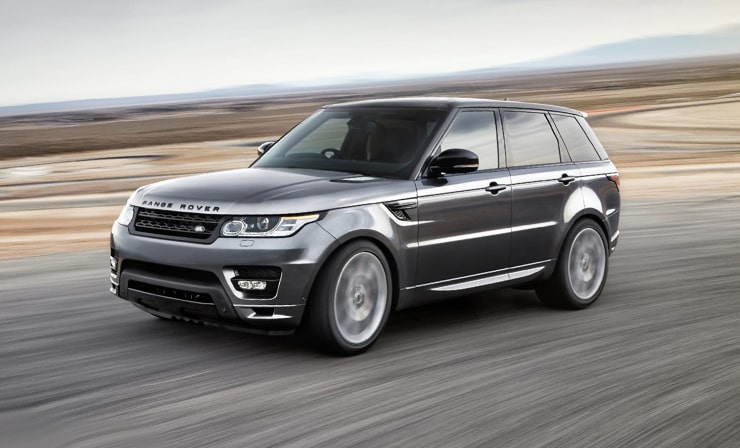The Range Rover, produced by Land Rover, is an iconic luxury SUV known for its combination of off-road capability, refined styling, and state-of-the-art technology. At the heart of this vehicle’s performance lies the Range Rover engine—a masterpiece of engineering that powers its exceptional abilities both on and off the road. Over the decades, the Range Rover has undergone numerous transformations, with continuous improvements in engine design, performance, and efficiency. In this article, we’ll take an in-depth look at the Range Rover engine, exploring its evolution, technical features, performance capabilities, and its role in the vehicle’s reputation for luxury and power.
1. The Evolution of Range Rover Engines
Since its introduction in 1970, the Range Rover has been equipped with various types of engines, each reflecting advancements in automotive engineering and the growing demand for more efficient, powerful, and environmentally friendly powertrains. The evolution of Range Rover engines mirrors the development of modern SUVs, moving from traditional V8 engines to advanced hybrid and electric powertrains.
In the early days, the Range Rover featured a 3.5-liter V8 engine, derived from the Buick V8 engine. This engine was notable for its durability and power, traits that helped establish the Range Rover’s reputation as a rugged, off-road vehicle capable of handling the most challenging terrains. Over time, as environmental concerns and the demand for better fuel efficiency grew, the Range Rover began incorporating more efficient engines, including turbocharged diesel engines and smaller V6 options.
In recent years, Range Rover engines have become more sophisticated, with Land Rover introducing a range of powerful yet efficient gasoline, diesel, hybrid, and plug-in hybrid engines. These modern engines feature advanced technologies such as turbocharging, supercharging, and mild-hybrid systems, which offer a balance of performance and environmental responsibility.
2. Range Rover Engine Types
There are various types of engines available across different Range Rover models, designed to cater to different driving preferences and regulatory environments. Let’s explore the main categories of Range Rover engines:
a) Gasoline Engines
Range Rover gasoline engines are designed to deliver high performance and smooth driving dynamics, making them popular among those who prioritize speed, power, and a responsive driving experience. Some of the key features of these engines include supercharging and turbocharging, which enhance the vehicle’s performance without compromising efficiency.
- Inline-6 and V8 Engines: One of the most notable gasoline engines in the Range Rover lineup is the 5.0-liter V8 supercharged engine. This engine has been praised for its immense power, producing up to 518 hp and 461 lb-ft of torque, allowing the Range Rover to accelerate from 0 to 60 mph in just over 5 seconds. This kind of performance is remarkable for a vehicle of its size and weight.
- PHEV (Plug-in Hybrid Electric Vehicle) Options: Land Rover has also introduced plug-in hybrid models powered by gasoline engines paired with electric motors. These hybrid engines combine the benefits of an internal combustion engine (ICE) with the efficiency and low emissions of electric power, making them an ideal choice for eco-conscious drivers.
b) Diesel Engines
Diesel engines have long been a popular option in the Range Rover lineup, especially in markets like Europe, where diesel engines are favored for their fuel efficiency and torque-rich performance. Range Rover’s diesel engines are designed for those who need a robust powertrain for off-road adventures, towing, and long-distance driving.
- 3.0-liter TDV6 and 4.4-liter SDV8 Engines: These diesel engines are known for their efficiency and torque, offering plenty of low-end grunt that makes the Range Rover an excellent choice for drivers who require towing capabilities or need to tackle challenging terrains. Diesel engines in the Range Rover lineup have also benefited from advancements in emissions technology, helping to reduce their environmental impact while maintaining strong performance.
c) Hybrid and Electric Powertrains
In response to the increasing demand for environmentally friendly vehicles, Land Rover has developed several hybrid and electric powertrain options for the Range Rover. These powertrains not only improve fuel efficiency but also reduce the vehicle’s carbon footprint, aligning with global trends toward more sustainable driving solutions.
- PHEV Powertrains: The plug-in hybrid variants of the Range Rover are equipped with a 2.0-liter four-cylinder gasoline engine paired with an electric motor. This combination delivers a respectable 398 horsepower and can operate in full-electric mode for short distances, making it ideal for urban driving where emissions regulations may be stricter.
- Mild-Hybrid Technology: The introduction of mild-hybrid technology in the latest Range Rover engines marks a significant leap in fuel efficiency. These systems use a small electric motor to assist the engine during acceleration, capturing and storing energy that would otherwise be lost during braking. This helps reduce fuel consumption and lowers emissions without compromising on performance.
d) Future of Electric Powertrains
With the global automotive industry shifting toward full electrification, Land Rover has committed to offering fully electric versions of its vehicles, including the Range Rover. These electric powertrains will provide the same level of luxury, performance, and off-road capability that the Range Rover is known for, but with zero tailpipe emissions and significantly lower operating costs.
The electric Range Rover is expected to feature state-of-the-art battery technology, long-range capabilities, and fast-charging options, positioning it as a leader in the luxury electric SUV market. This transition to electric powertrains reflects Land Rover’s commitment to reducing its environmental impact while maintaining the premium performance and driving experience that its customers expect.
3. Performance and Capabilities of the Range Rover Engine
One of the standout features of the Rover is its ability to offer luxury, comfort, and high performance in equal measure. The engine plays a crucial role in ensuring that the Rover remains one of the most capable SUVs on the market, both in terms of on-road handling and off-road prowess.
a) On-Road Performance
Range Rover engines are designed to deliver smooth, refined power, ensuring that drivers enjoy a comfortable and responsive driving experience, whether on highways or city streets. The combination of advanced suspension systems, intelligent all-wheel drive, and powerful engines means that the Rover offers excellent handling and ride quality, even at high speeds.
- Acceleration and Top Speed: The gasoline V8 engine, in particular, offers blistering acceleration for an SUV of its size, with some models reaching 0 to 60 mph in under 5 seconds. The supercharged engines ensure that the Range Rover can effortlessly overtake slower traffic and maintain high speeds on open roads.
b) Off-Road Capability
The Rover has built its reputation on being a luxury SUV that doesn’t sacrifice off-road capability. Thanks to its powerful engine options, combined with advanced off-road technology such as Terrain Response and low-range gearing, the Range Rover is capable of tackling challenging terrains with ease.
- Torque and Towing Capacity: Diesel engines, with their high torque output, are particularly well-suited for off-road driving and towing heavy loads. The Rover can tow up to 7,716 pounds, making it a favorite among drivers who need to haul trailers, boats, or other large equipment.
- Terrain Response System: This system works in harmony with the engine to automatically adjust the vehicle’s settings for different types of terrain, whether it’s sand, mud, snow, or rocky surfaces. The engine’s torque delivery is fine-tuned to provide optimal performance in these conditions, ensuring that the Range Rover remains one of the most capable off-road vehicles available.
4. Fuel Efficiency and Environmental Impact
As with all large SUVs, fuel efficiency and emissions have historically been concerns for the Rover. However, recent advancements in engine technology have helped to address these issues. The introduction of hybrid engines, mild-hybrid systems, and more efficient diesel engines has significantly improved the Range Rover’s fuel economy while reducing its carbon footprint.
- Hybrid and Plug-in Hybrid Options: These engines allow the Rover to offer excellent fuel efficiency, especially in urban environments where short trips and stop-and-go traffic can benefit from electric power. In electric-only mode, the Rover can travel short distances without using any fuel, significantly reducing emissions in city driving.
- Mild-Hybrid Systems: By capturing and reusing energy that would otherwise be lost, mild-hybrid systems improve fuel efficiency without sacrificing performance. This technology is especially useful in reducing fuel consumption during city driving, where stop-start traffic can be a drain on traditional internal combustion engines.
5. Conclusion: The Range Rover Engine as a Powerhouse of Performance and Innovation
The Rover engine is more than just a source of power—it’s a key element that defines the vehicle’s character. Whether it’s the high-performance gasoline engines, the torque-rich diesel options, or the innovative hybrid powertrains, the Rover engine lineup offers something for every type of driver. As the automotive industry continues to evolve, Land Rover is keeping pace with its commitment to producing engines that deliver exceptional performance, efficiency, and environmental sustainability.




